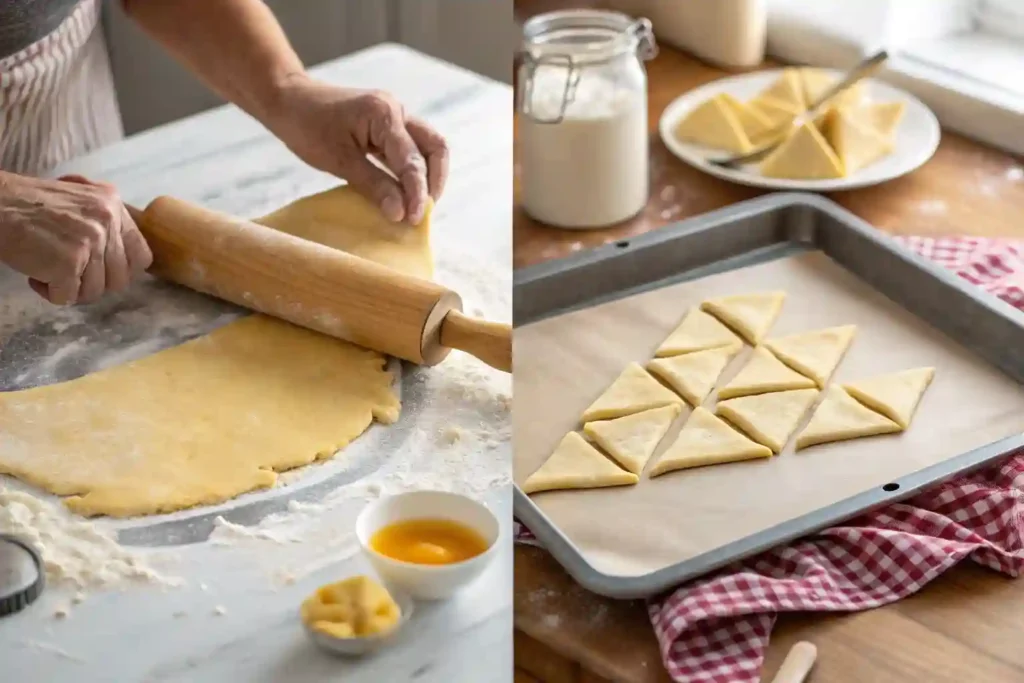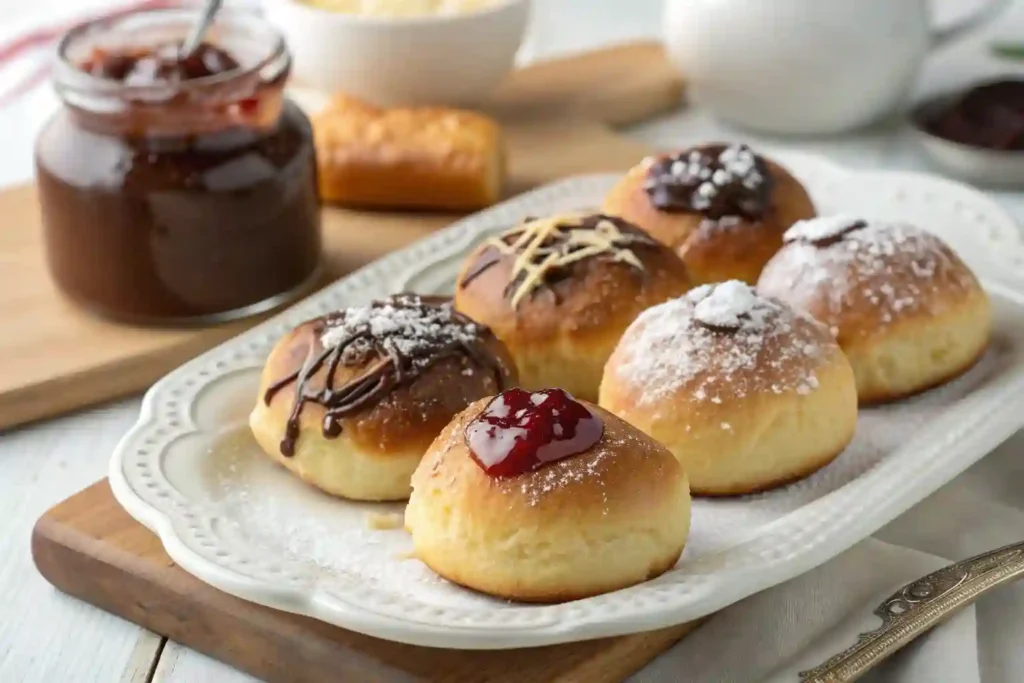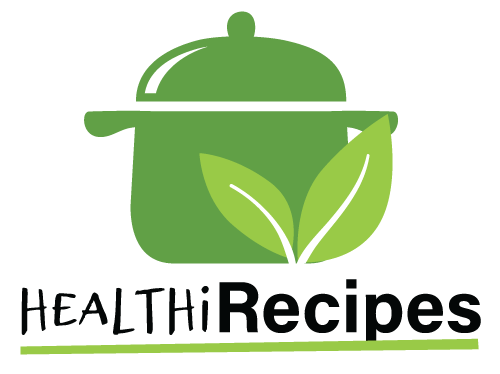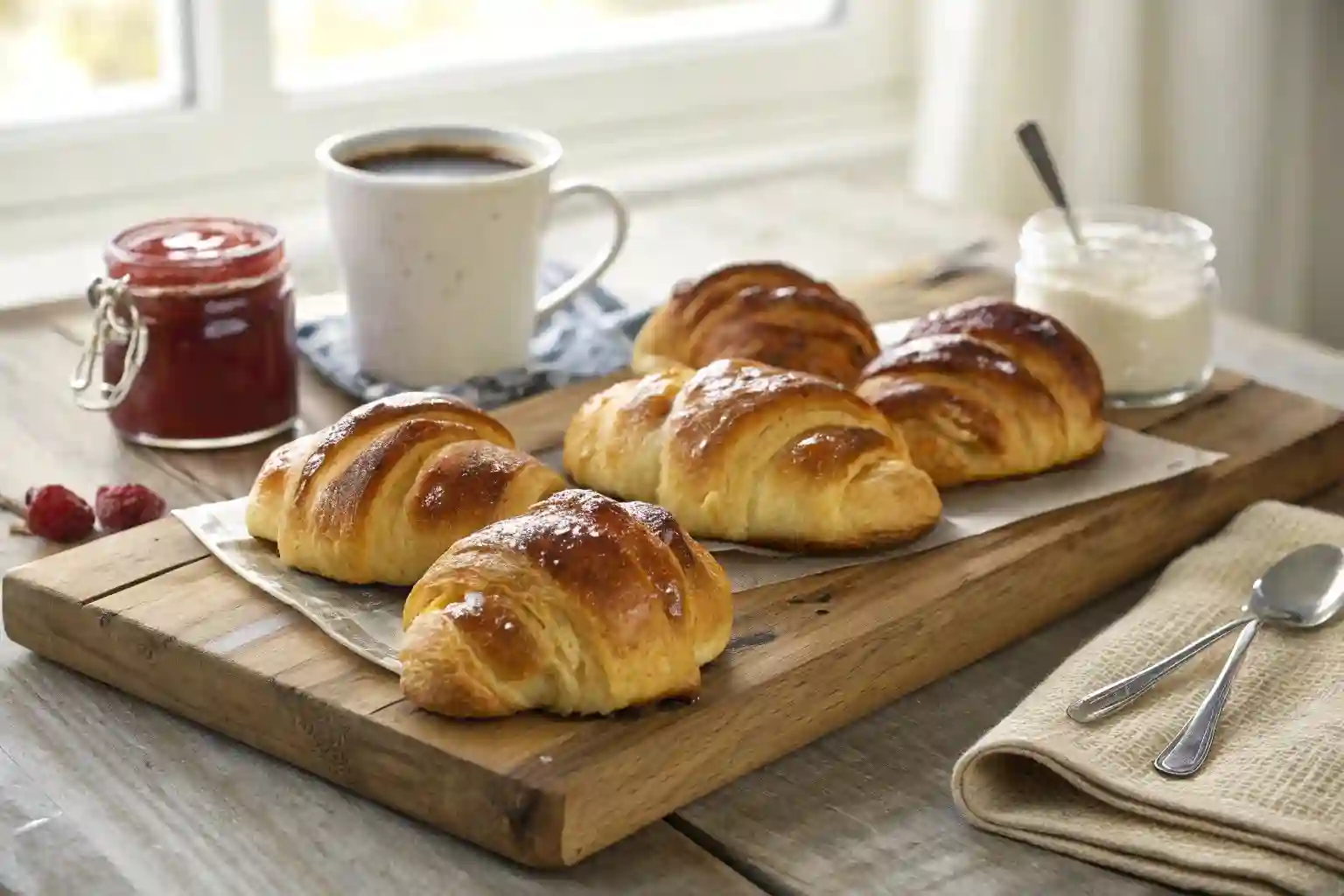When it comes to European pastries, the gipfeli recipe is a must-try for anyone who loves baking. This Swiss crescent-shaped pastry, often compared to the French croissant, is a breakfast staple and a beloved treat for people of all ages. Whether you’re looking for a traditional Swiss pastry or experimenting with new recipes, this guide will help you master the art of making gipfeli at home.
Table of Contents
What is Gipfeli?
The gipfeli recipe has been passed down through generations in Switzerland. Its name is derived from the German word “Gipfel,” meaning “peak” or “summit,” which reflects its crescent shape. While it shares similarities with the French croissant, the gipfeli has its own distinct characteristics, including a slightly denser texture and a less buttery flavor. This makes it a versatile pastry that can be enjoyed with both sweet and savory accompaniments.
The history of gipfeli is closely tied to the evolution of European baking traditions. Some historians trace its roots back to the Austrian kipferl, a crescent-shaped bread that predates the croissant. Over time, the Swiss adapted the recipe to suit their tastes, resulting in the gipfeli we know today.
How Gipfeli Differs from Croissants
One of the most common questions about gipfeli is how it differs from croissants. While both pastries share a crescent shape, their textures and flavors set them apart. Croissants are known for their light, airy layers and rich buttery taste, achieved through a labor-intensive laminating process. Gipfeli, on the other hand, has a slightly firmer texture and a more subtle buttery flavor. This is because gipfeli dough often contains less butter and may include milk or cream for added richness.
Another key difference lies in the preparation. Gipfeli dough is typically less laminated than croissant dough, resulting in a pastry that is less flaky but equally delicious. This makes gipfeli a more approachable recipe for home bakers who want to try their hand at making crescent-shaped pastries.
Ingredients for the Perfect Gipfeli Recipe
Essential Ingredients for a Traditional Gipfeli Recipe
To make the best gipfeli recipe, you’ll need a few essential ingredients. These include:
- Flour: All-purpose flour works well, but bread flour can be used for a chewier texture.
- Butter: Unsalted butter is preferred for its pure flavor.
- Milk: Adds richness and helps create a tender dough.
- Yeast: Active dry yeast or instant yeast is used to leaven the dough.
- Sugar: A small amount of sugar enhances the flavor without making the pastry overly sweet.
- Salt: Balances the sweetness and enhances the overall taste.
Optional Additions for Flavor
While the classic gipfeli recipe is delicious on its own, you can customize it with additional ingredients to suit your preferences. Some popular options include:
- Chocolate: Add a piece of chocolate to the center of each gipfeli before rolling it up for a sweet surprise.
- Jam or Preserves: Spread a thin layer of fruit jam on the dough for a fruity twist.
- Cheese: For a savory version, sprinkle grated cheese over the dough before shaping.
- Seeds: Top the gipfeli with sesame seeds, poppy seeds, or sunflower seeds for added texture and flavor.
Step-by-Step Guide to Making Gipfeli at Home

Follow this detailed gipfeli recipe to create a delicious Swiss pastry:
Preparing the Dough
Making gipfeli at home starts with preparing the dough. Begin by combining the yeast with warm milk and a pinch of sugar to activate it. Once the yeast is frothy, mix it with the remaining ingredients to form a soft, pliable dough. Knead the dough for about 10 minutes until it becomes smooth and elastic. Cover the dough with a damp cloth and let it rise in a warm place for 1-2 hours, or until it doubles in size.
Shaping and Baking
Once the dough has risen, it’s time to shape the gipfeli. Start by rolling out the dough into a large rectangle on a floured surface. The thickness should be about 1/4 inch (0.6 cm). Using a sharp knife or a pizza cutter, divide the dough into long triangles. The base of each triangle should be wide, tapering to a point at the top.
To shape the gipfeli, take one triangle and gently stretch the base. Roll the dough tightly from the base to the tip, forming a crescent shape. Place the rolled gipfeli on a baking sheet lined with parchment paper, ensuring the tip is tucked underneath to prevent it from unrolling during baking. Repeat this process with the remaining triangles.
Before baking, brush the gipfeli with an egg wash (a mixture of beaten egg and a splash of milk) to give them a golden, glossy finish. For added flavor and texture, sprinkle the tops with seeds, such as sesame or poppy seeds.
Preheat your oven to 375°F (190°C) and bake the gipfeli for 15-20 minutes, or until they are golden brown and puffed. Allow them to cool slightly before serving.
Tips for Perfecting Your Gipfeli Recipe
Mastering the gipfeli recipe requires attention to detail and practice:
Common Mistakes to Avoid
Even experienced bakers can encounter challenges when making gipfeli. Here are some common mistakes to watch out for:
Preparing the Dough for Your Gipfeli Recipe
- Overproofing the Dough: Allowing the dough to rise for too long can result in a dense, overly yeasty pastry. Keep an eye on the dough and proceed to the next step as soon as it doubles in size.
- Using Cold Butter: If the butter is too cold, it won’t incorporate evenly into the dough, leading to uneven texture. Let the butter soften slightly before mixing.
- Skipping the Egg Wash: The egg wash not only gives the gipfeli a beautiful golden color but also helps create a slightly crisp exterior. Don’t skip this step!
Secrets to a Flaky Texture
Achieving the perfect flaky texture in gipfeli requires attention to detail. Here are some tips to help you master the process:
- Chill the Dough: If the dough becomes too warm while rolling and shaping, the butter may melt, resulting in a less flaky pastry. Chill the dough in the refrigerator for 15-20 minutes if needed.
- Roll Evenly: Ensure the dough is rolled out evenly to avoid thick or thin spots, which can affect the baking process.
- Don’t Overwork the Dough: Over-kneading can make the dough tough. Knead just until it’s smooth and elastic.
Variations of Gipfeli to Try

Sweet Gipfeli
For those with a sweet tooth, there are plenty of ways to elevate the classic gipfeli recipe. Here are some ideas:
- Chocolate-Filled Gipfeli: Place a small piece of dark or milk chocolate at the base of each triangle before rolling it up. The chocolate will melt during baking, creating a gooey, indulgent center.
- Cinnamon Sugar Gipfeli: Sprinkle the dough with a mixture of cinnamon and sugar before shaping. The result is a pastry with a warm, spiced flavor.
- Almond Gipfeli: Add a layer of almond paste or marzipan to the dough for a nutty, sweet twist.
Savory Gipfeli
If you prefer savory flavors, try these variations:
- Cheese and Herb Gipfeli: Sprinkle grated cheese and chopped fresh herbs, such as rosemary or thyme, over the dough before rolling.
- Ham and Cheese Gipfeli: Add a thin slice of ham and a sprinkle of cheese to each triangle for a hearty, satisfying snack.
- Spinach and Feta Gipfeli: Spread a mixture of cooked spinach and crumbled feta cheese on the dough for a Mediterranean-inspired treat.
FAQs About Gipfeli Recipe and Croissants
What is the difference between a croissant and a gipfeli?
While both pastries share a crescent shape, the gipfeli and the croissant differ in texture, flavor, and preparation. Croissants are known for their light, airy layers and rich buttery taste, achieved through a labor-intensive laminating process. Gipfeli, on the other hand, has a slightly denser texture and a more subtle buttery flavor. This is because gipfeli dough often contains less butter and may include milk or cream for added richness. Additionally, gipfeli dough is less laminated than croissant dough, resulting in a pastry that is less flaky but equally delicious.
What are the ingredients in a croissant?
The classic croissant recipe includes the following ingredients:
- Flour: Typically all-purpose or bread flour.
- Butter: High-quality unsalted butter is essential for the rich, flaky layers.
- Milk: Used to create a tender dough.
- Yeast: Active dry or instant yeast is used for leavening.
- Sugar: Adds a touch of sweetness to the dough.
- Salt: Balances the flavors.
These ingredients are similar to those used in gipfeli, but the preparation process for croissants involves more folding and layering to create the signature flakiness.
What is the secret to a good croissant?
The secret to a perfect croissant lies in the lamination process, where layers of butter are folded into the dough multiple times. This creates the light, flaky texture that croissants are famous for. Other key factors include:
- Using high-quality butter: The butter should have a high fat content for the best results.
- Maintaining the right temperature: The dough and butter must stay cold during the lamination process to prevent the butter from melting.
- Proper proofing: Allowing the dough to rise at the right temperature ensures a light, airy texture.
What is a common mistake in croissants?
One of the most common mistakes when making croissants is overproofing the dough. If the dough rises for too long, it can collapse during baking, resulting in a dense, heavy pastry. Other mistakes include:
- Using butter that is too soft: This can cause the layers to merge, eliminating the flakiness.
- Skipping the chilling process: Keeping the dough cold is essential for maintaining distinct layers.
- Rolling the dough unevenly: Uneven dough can lead to inconsistent baking and texture.
Conclusion
Conclusion
Gipfeli are not just pastries; they are a delightful experience that brings a taste of Switzerland to your kitchen. By following the steps outlined above, you can create these delicious treats that are sure to impress your family and friends. For more variations and tips on making these pastries, check out our article on how to make chocolate sourdough bread. Additionally, if you’re interested in exploring more about Gipfeli, visit Tara’s Multicultural Table for an in-depth look at this Swiss classic. Whether enjoyed fresh out of the oven or as part of a brunch spread, Gipfeli are a versatile addition to any meal. Embrace the joy of baking and savor the delightful flavors of these Swiss pastries!

